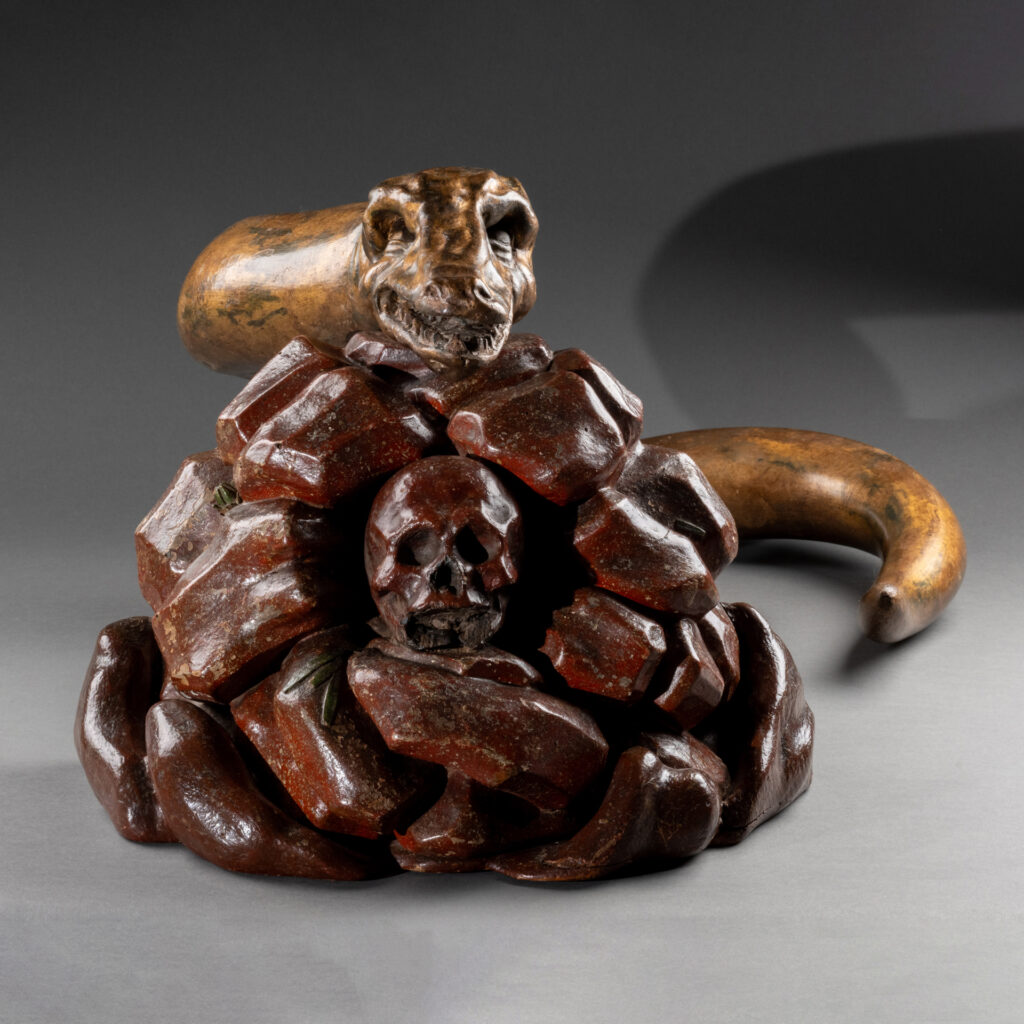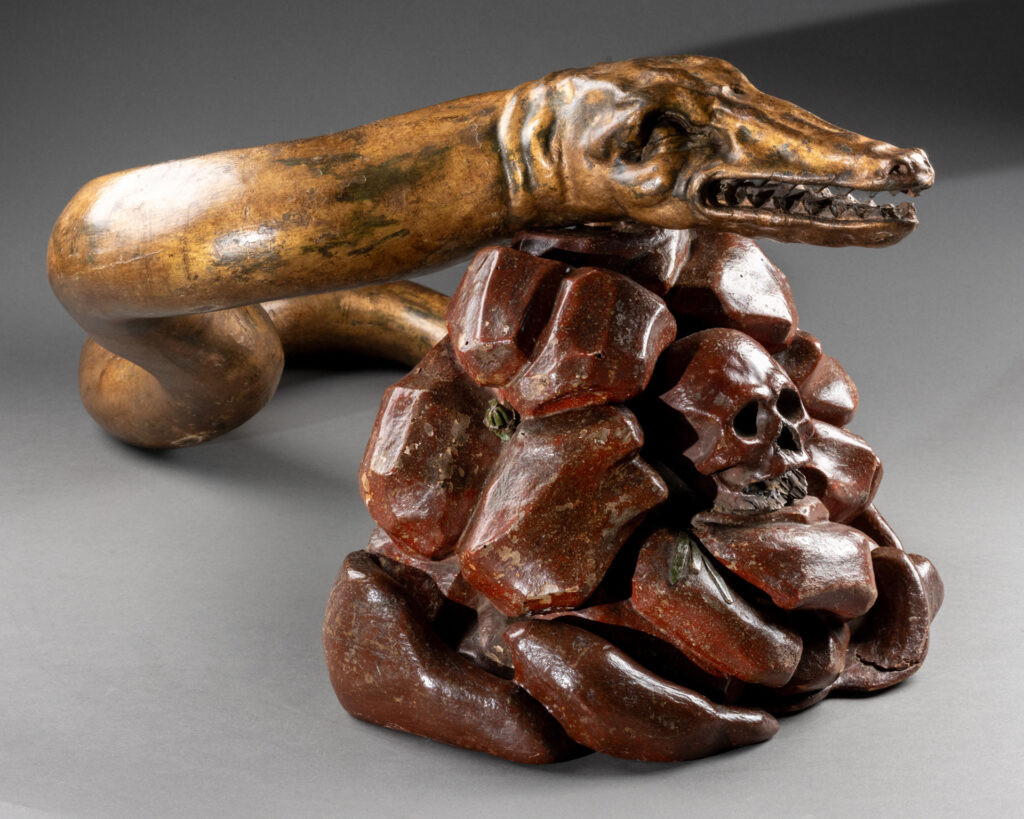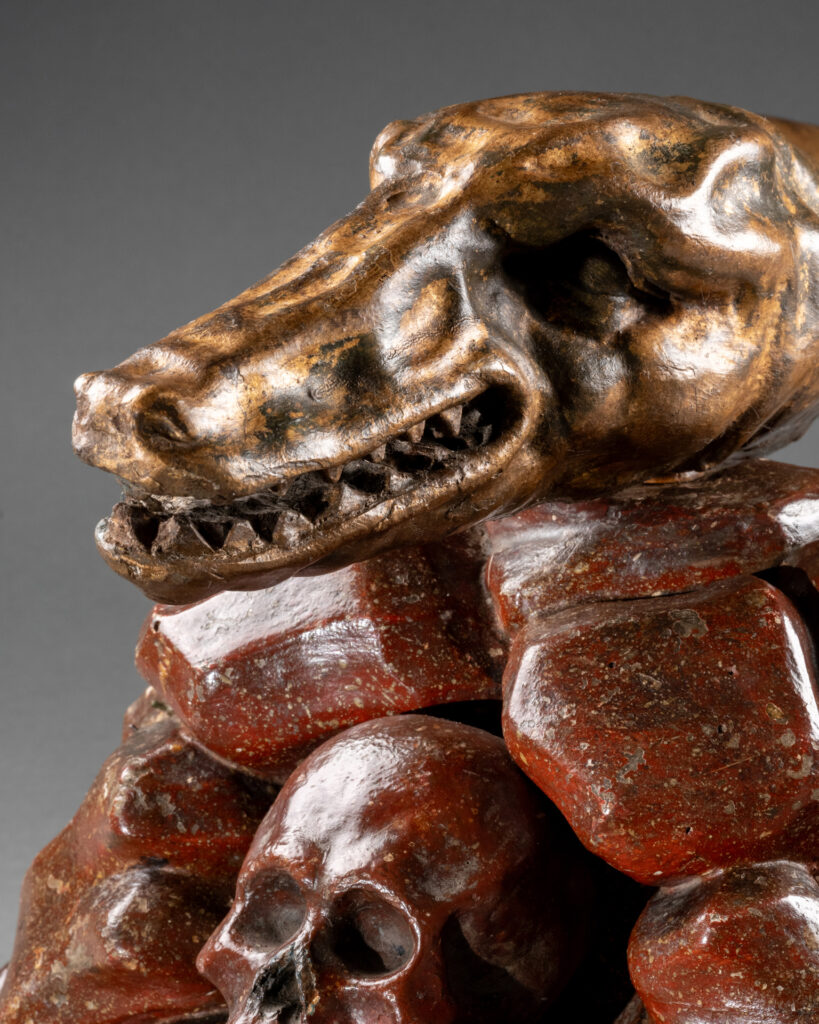This curiosity, depicting a snake on a rock, is quite unique. The animal is made of wood, gilded with gold leaf, and rests on a wooden mound, imitating porphyry, both of which can be separated.
This sculpture must have been part of a set in a church, surrounded by saints.
From a technical point of view, the work is extremely well executed, notably the mouth with its sculpted teeth, and the sunken eyes, which reveal the eyelids beneath a fold of skin. The animal’s head is quite expressive, even slightly threatening.
The polychrome base may represent Mount Golgotha. The word comes from the ancient Greek meaning “skull-summit”.
St. Matthew wrote in the Bible: “Arrived at the place called Golgotha, which means place of the skull” (27:33).
Located on the outskirts of Jerusalem, it was used by the Romans to execute the condemned, including Jesus. Legend even has it that Adam’s body was buried under this mountain, and that when Jesus was crucified, his skull was found.
On our work, the artist has incorporated a human skull, perhaps to support this religious theory. Small leaves are carved all around, seemingly growing between the boulders.
From another point of view, this skull could echo the concept of vanity, which was quite fashionable in the 17th century, and which aimed to show the fragility of human life.
We can also relate it to the representation of the Airain serpent. When the Hebrews crossed the desert under Moses’ supervision, those who were tired and began to slander God and Moses were bitten by snakes and died. Moses prayed to the Lord to find a solution to combat this. God suggested he erect a bronze bronze snake on his staff, and every person attacked by a snake would have no choice but to look the bronze snake in the eye to heal. Although the snake is in the collective imagination a figure of evil, this has not always been the case, and the bronze serpent is a good example, with its role as a healing serpent in the Bible.




